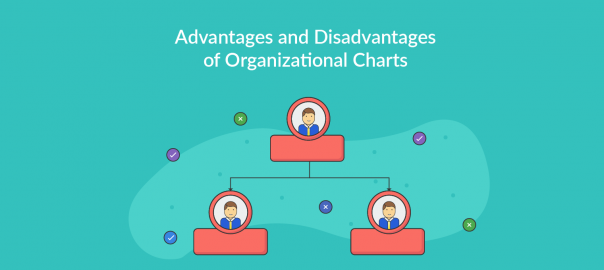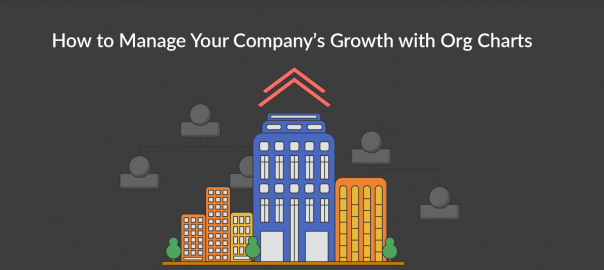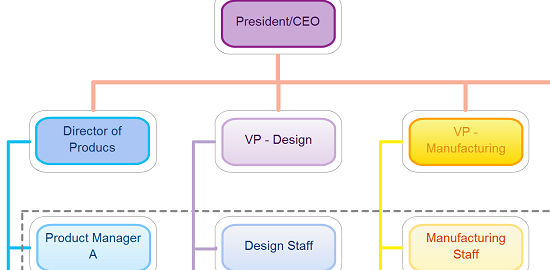A flat organizational structure is a modern approach to company design that removes unnecessary layers of management to promote openness, faster decision-making, and stronger collaboration. Unlike traditional hierarchies, it empowers employees to communicate directly with leadership and take ownership of their work. This guide explores how flat organization charts visually represent this structure, outlining their key characteristics, advantages, and challenges, while also comparing them to traditional hierarchical (tall) structures to help you find the right balance of clarity, flexibility, and collaboration for your organization.
What is Flat Organization Structure?
A flat organizational structure (also known as a horizontal organizational structure) breaks away from the traditional hierarchy by minimizing or even removing layers of middle management between executives and employees. This structure is especially effective for startups, creative agencies, and agile teams that prioritize innovation over bureaucracy, and an organizational chart helps make those streamlined relationships visible at a glance.
Characteristics of a Flat Organizational Structure
A flat organizational structure captures the essence of modern, agile workplaces with fewer layers, more collaboration, and a stronger sense of equality. Instead of showing a top-heavy hierarchy, it visualizes teams working side by side, highlighting openness and shared responsibility over rank or title. This layout is especially common in startups, creative teams, and innovative companies that value flexibility, fast decision-making, and teamwork over bureaucracy. Key characteristics are,
- Minimal Management Layers: Few or no middle managers between executives and employees, creating a wide, horizontal chart layout.
- Wide Span of Control: Leaders or managers oversee more employees directly, keeping communication fast and transparent.
- Open Communication Channels: Encourages direct interaction between teams and leadership, cutting out unnecessary reporting barriers.
- Collaborative Team Structure: Teams are often cross-functional, working together toward shared goals and collective outcomes.
- Empowered Employees: Everyone is trusted to make decisions, contribute ideas, and take initiative within their roles.
- Flexible Role Boundaries: Roles aren’t rigid. People occupy multiple roles depending on project needs.
- Quick Decision-Making: With fewer approval steps, decisions happen faster and execution is more responsive.
- Adaptable and Agile Layout: The structure evolves easily as the organization grows, pivots, or scales.
- Visual Emphasis on Equality: The horizontal design reflects collaboration and openness rather than rank or authority.
Here’s a flat (horizontal) organizational structure example diagram that illustrates these characteristics.
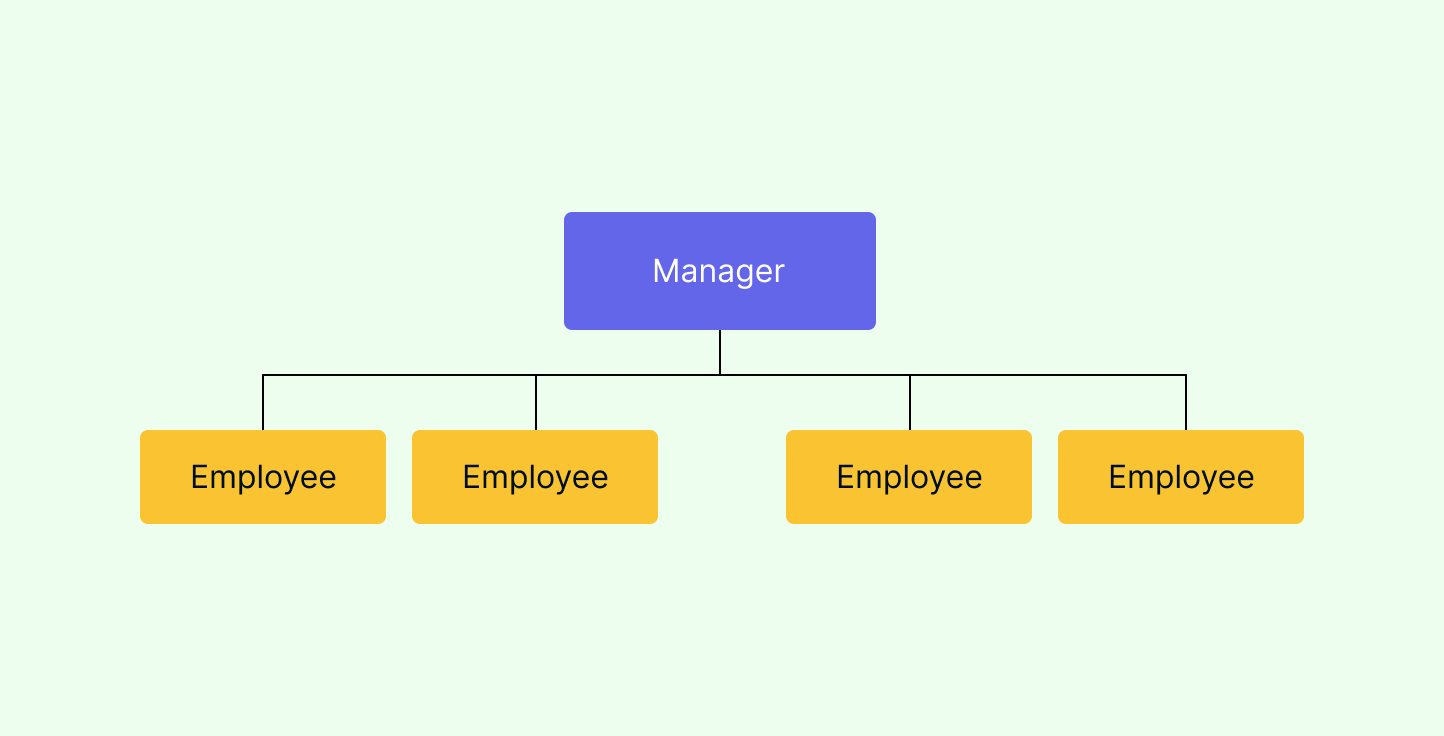
Flat and Hierarchical Organizational Structure: Key Differences
Organizations typically operate under one of two main types, flat and tall organizational structures. A tall organizational structure, often referred to as a hierarchical structure, is the traditional management model used by many large and established companies. It features multiple layers of authority, where decisions and communication flow from top leadership through middle management to frontline teams. This setup prioritizes control, oversight, and clearly defined reporting relationships.
Each approach offers distinct advantages depending on an organization’s size, goals, and culture. Here are their key differences.
|
Aspect |
Flat Org Structure |
Tall (Hierarchical) Organizational Structure |
|
Structure Shape |
Broad and horizontal with few management layers |
Tall and pyramid-shaped with multiple levels of authority |
|
Chain of Command |
Short — direct relationships between employees and leaders |
Long — several managerial levels separate top executives from frontline staff |
|
Decision-Making |
Decentralized — employees and teams share responsibility |
Centralized — decisions flow downward through defined managerial channels |
|
Communication Flow |
Open and fast, encouraging cross-team collaboration |
Formal and structured, often slower due to multiple approval stages |
|
Employee Empowerment |
High — fosters autonomy and innovation |
Moderate — employees follow formal supervision and set procedures |
|
Supervision Level |
Minimal oversight; managers handle broader spans of control |
Close supervision with narrower spans of control per manager |
|
Flexibility and Adaptability |
Highly flexible, enabling quick responses to change |
More rigid and stable, better for maintaining consistency |
|
Innovation and Collaboration |
Promotes creativity and shared problem-solving |
May limit innovation due to hierarchical approval processes |
|
Career Growth |
Fewer promotion levels but broader learning opportunities |
Clear step-by-step advancement through established ranks |
|
Best Suited For |
Startups, small businesses, and agile project teams |
Large, structured organizations requiring defined authority and control |
To learn how hierarchical structures function in practice, check out our detailed guide on hierarchical structure org charts.
Advantages and Disadvantages of Flat Organizational Structure
Now let’s look at the flat organizational structure advantages and disadvantages.
Advantages of Flat Organizational Structure Org Charts
Flat organizational charts give a modern, people-first view of how teams work. They are open, connected, and agile. They visually capture the spirit of collaboration and autonomy by showing everyone on the same level, without heavy layers of management. This makes it easy for teams to communicate, make decisions faster, and stay aligned toward shared goals. Key advantages include:
- Enhanced Collaboration: Fewer management layers mean more direct communication between employees and leaders, encouraging teamwork and idea-sharing.
- Faster Decision-Making: With minimal approvals, teams can act quickly, adapt faster, and seize new opportunities with ease.
- Greater Employee Empowerment: Employees have the freedom to take initiative and ownership, driving motivation and engagement across the board.
- Improved Communication Flow: The open structure ensures everyone stays informed and connected, reducing misunderstandings and silos.
- Stronger Sense of Ownership: Shared decision-making makes individuals more accountable and invested in team success.
- Increased Innovation: Flat organization charts foster creativity and ideas move freely without bureaucratic bottlenecks slowing progress.
- Transparency Across Teams: Everyone can easily see who’s responsible for what, helping align roles, goals, and collaboration.
- Simplified Management: Fewer layers reduce administrative overhead and make coordination smoother across departments.
- Agility and Flexibility: Flat org charts adapt easily as projects change or new teams form, keeping organizations nimble.
- Better Team Morale: The inclusive structure promotes trust, recognition, and open dialogue, building a positive, collaborative culture.
You can easily design and manage flat org charts using Creately’s organizational chart software, complete with editable templates, smart connectors, and real-time collaboration. It’s perfect for modern, fast-moving teams.
Disadvantages of Flat Organizational Structure Org Charts
While flat (or horizontal) organizational charts promote openness, collaboration, and flexibility, they can also create new challenges as teams expand or as leadership structures become more complex. The same qualities that make flat hierarchy structures agile can sometimes lead to confusion, inefficiencies, or uneven workloads if responsibilities aren’t clearly defined. Key disadvantages include:
- Unclear Authority Lines: With fewer management layers, it can be hard to determine who’s ultimately responsible for decisions or outcomes.
- Role Confusion: When roles overlap or aren’t clearly represented on the chart, tasks may get duplicated or missed entirely.
- Limited Career Progression: Fewer hierarchical levels can mean fewer promotion opportunities or visible career paths for employees.
- Decision Overload: Managers and team leads might become overwhelmed by having to oversee too many direct reports or decisions.
- Coordination Challenges: As the organization grows, maintaining alignment without clear structure becomes increasingly difficult.
- Inconsistent Decision-Making: Without a defined chain of command, teams may make conflicting or redundant decisions.
- Potential for Informal Hierarchies: Even in flat hierarchical structures, unofficial power dynamics can form, creating hidden layers of influence.
- Scalability Issues: Flat hierarchy structures work well for small, tight-knit teams but can become inefficient as the organization grows.
- Communication Overload: Open communication across everyone can result in too many meetings or excessive information flow.
- Reduced Accountability: Shared authority can blur responsibility, making it unclear who owns specific results or deliverables.
If you’re looking to build a clear, functional flat org chart for your own team, check out our step-by-step guide on how to create an organizational chart, complete with examples, templates, and practical design tips to help you get started.
Flat Organizational Structure Examples in Business
W. L. Gore & Associates
Best known for its GORE-TEX products, W. L. Gore operates under a unique “lattice” or flat structure where employees (called associates) work without traditional bosses. Instead of rigid hierarchies, leadership emerges naturally based on expertise and initiative. This system encourages innovation, accountability, and open communication across all levels.
SAS Institute
The global analytics software company is known for maintaining a minimal management hierarchy, with only a few layers separating the CEO from staff. This flat approach gives employees greater autonomy, fosters collaboration, and sustains the company’s culture of innovation and transparency, key reasons SAS consistently ranks high in “Best Places to Work” lists.
Valve Corporation
The game development company behind Half-Life and Portal is one of the most well-known examples of a truly flat organization. Valve has no formal managers; employees choose the projects they want to work on and self-organize into teams. This open structure maximizes creativity, ownership, and adaptability, though it also requires strong communication and self-discipline among employees.
Free Org Chart Templates to Get Started
Org Chart Layout for a Flat Organization
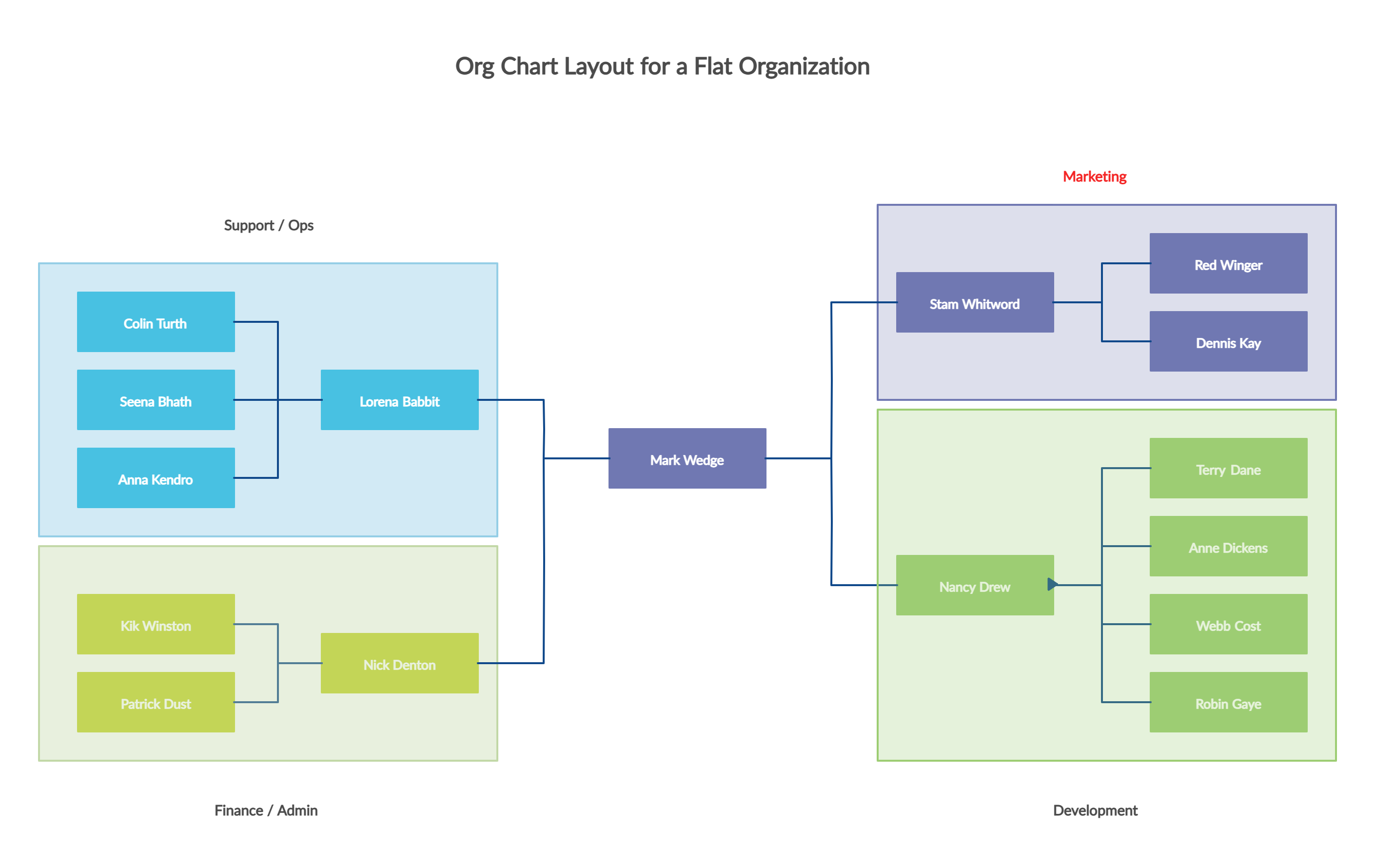
Flat Org Structure for Small Teams
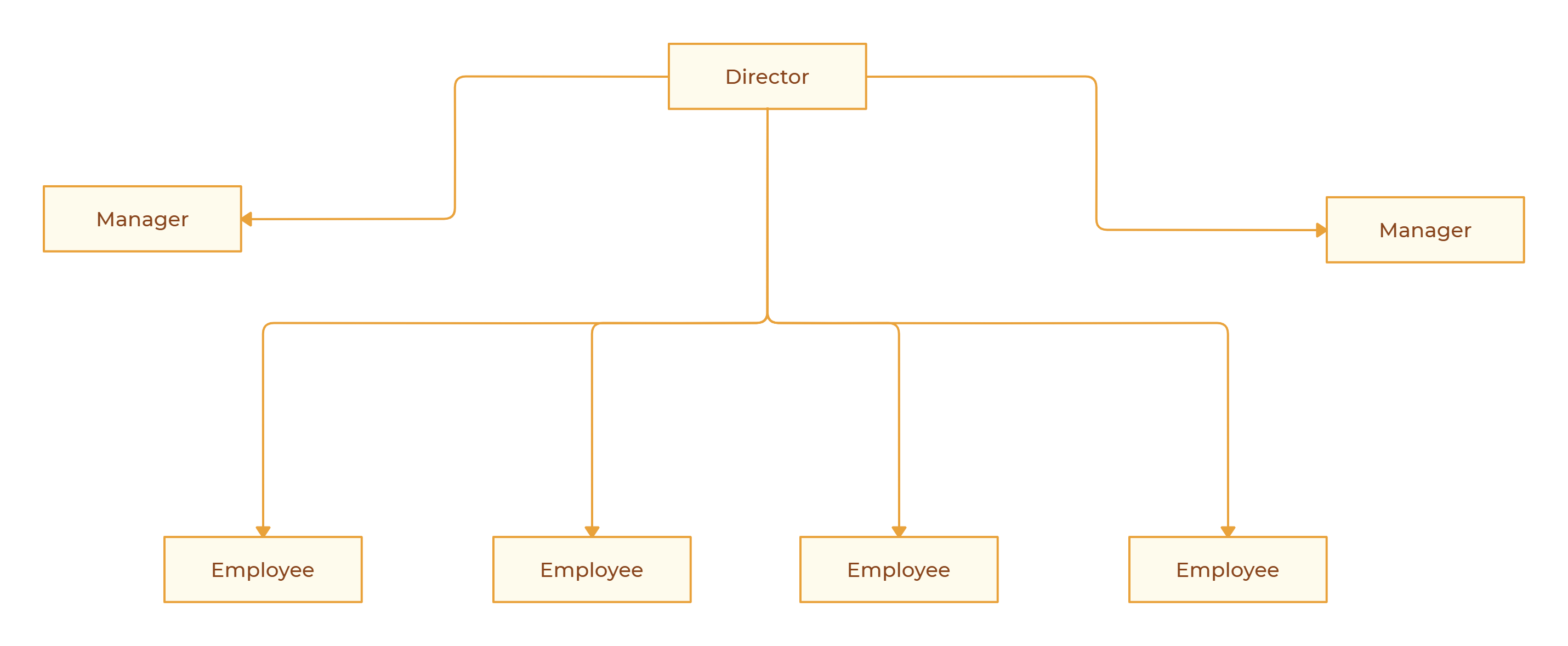
Flat Organizational Chart for Startups
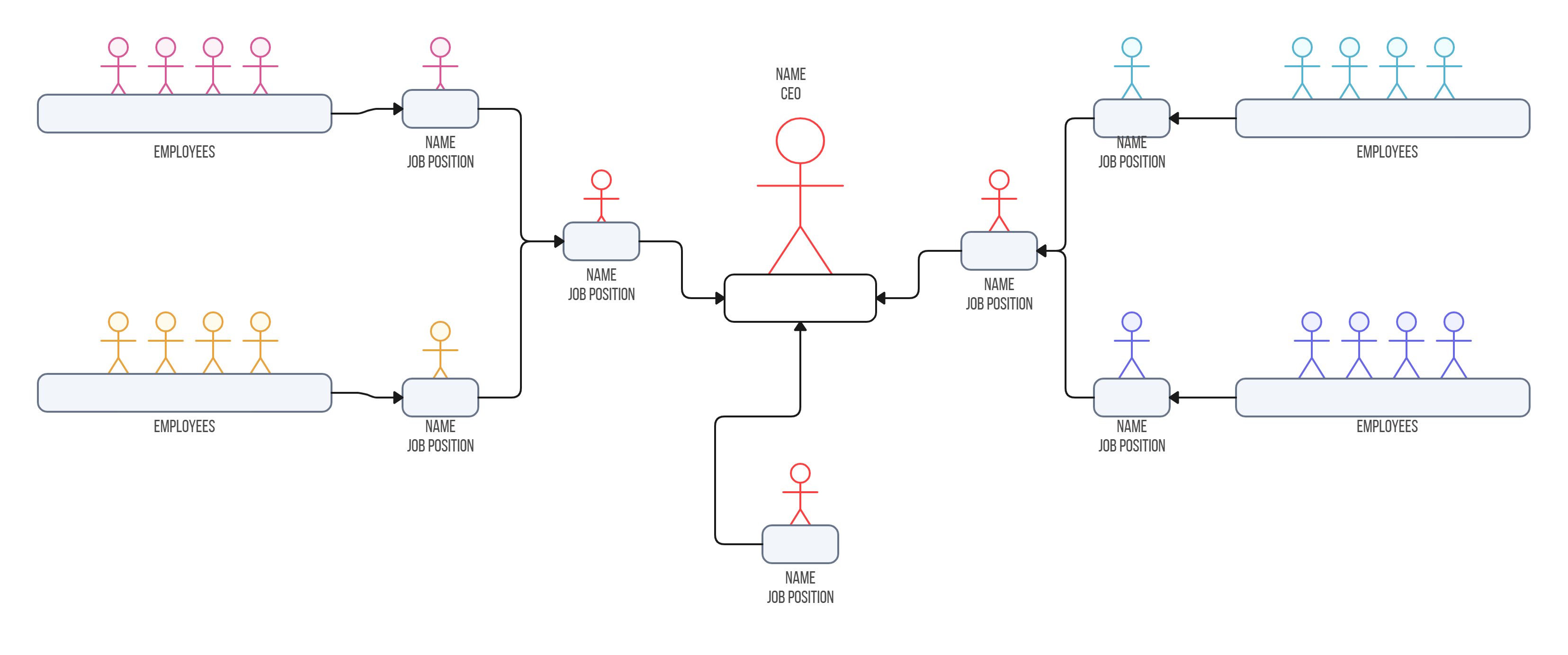
Small Business Flat Organization Structure Template

Explore more of Creately’s organizational chart templates to quickly build, customize, and share professional flat or hierarchical org charts for your team.
FAQs about Org Charts with Flat Organizational Structure
What is an example of a job role in a flat hierarchy?
In a flat hierarchy, roles like software developers, designers, product managers, or marketing specialists often operate with minimal layers of supervision. These positions typically report directly to a team lead or founder, giving employees more autonomy and faster decision-making authority.
What are the four main types of organizational charts?
The primary org chart formats are,
- Hierarchical
- Flat
- Divisional
- Matrix
What types of organizations benefit most from flat org charts?
Flat organization charts work best for startups, creative agencies, small to mid-sized businesses, and agile project teams that thrive on collaboration and quick decision-making.
How can flat org charts support growing teams?
By providing a visual anchor, org charts help maintain clarity as teams grow. They can be updated to show evolving roles, project ownership, or temporary leadership without formal restructuring.


